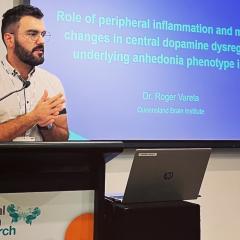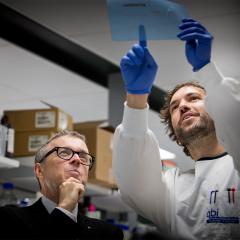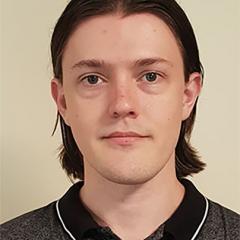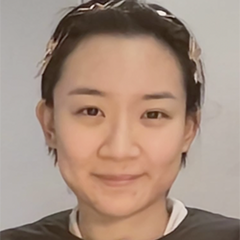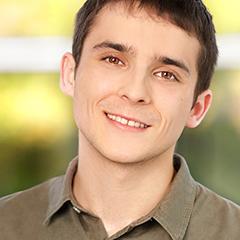The Functional Neuromodulation and Novel Therapeutics Laboratory strives to improve treatment options for patients with difficult to treat psychiatric disorders.
Our interdisciplinary approach draws from diverse fields, including neuroscience, medicine, molecular biology, biochemistry, and neural engineering, to investigate the mechanisms mediating treatment resistance and responses to standard and emerging antidepressant therapeutics.
Despite the array of therapies available, a considerable proportion of individuals continue to endure symptoms despite receiving optimal psychiatric care. Recognizing this critical gap, our laboratory aims to unravel the underlying biological mechanisms driving such challenges and to pioneer innovative, personalized treatment approaches.
With a focus on biomarkers and real-time biofeedback, we are pioneering the customisation of neuromodulatory and immunometabolic treatments to facilitate recovery and remission from severe mental illnesses, including treatment-resistant depression, bipolar disorder, and post-traumatic stress disorder.
Our research bridges translational neuroscience and precision medicine clinical trials, with the overarching objective of ushering new, individualised therapies into clinical practice.
Our overarching goal is to advance timely interventions that foster optimal neurodevelopment, personalised psychiatric care, and enduring brain health.
Basic and translational neuroscience:
Immunometabolic mechanisms of stress vulnerability and resilience:
Stress exerts profound effects on both the immune system and metabolic processes, with far-reaching implications for brain and mental health.
Our research has elucidated the intricate interplay between stress, brain insulin signalling, and immunometabolism, shedding light on their roles in stress vulnerability and the onset of treatment-resistant states in mood and stress disorders. Leveraging advanced techniques across neuronal-glia co-culture, patient-derived immune cells, and preclinical rodent models, we investigate:
- The impact of stress on immunometabolism within the brain and peripheral systems.
- Immunometabolic pathways governing dopamine synthesis, release, and plasticity.
- Strategies for modulating immunometabolic pathways to bolster stress resilience and promote brain health.
We aim to uncover novel therapeutic targets that harness the intricate connections between stress, immunometabolism, and neural circuitry, ultimately offering new avenues for personalised treatment and enhanced well-being.
Mechanisms of antidepressant resistance and response:
We use a multi-faceted approach encompassing cellular models, animal models, and translational human studies to unravel the intricate mechanisms of antidepressant resistance and response. Central to our research efforts has been development of novel rodent models of stress-induced mood dysregulation and antidepressant treatment resistance and functional human cell assays.
Across multiple studies, we have identified a key role for diminished cellular insulin signalling in antidepressant resistance, via impairment of synaptic plasticity and glucose metabolism. Building on these findings, current projects are focused on elucidating the molecular, cellular, synaptic, and systems-level mechanisms through which insulin-dependent signalling regulates synaptic plasticity, stress vulnerability and antidepressant response.
Adaptive Neuromodulation
As we work to better understand the neurobiology of treatment resistance in depression and related psychiatric disorders, we aim to harness emerging neuromodulation technologies to offer novel treatment options for patients that facilitate rapid and sustained recovery. As part of this, we are working to develop an adaptive neuromodulation system that adjusts parameters in real-time to optimise patient outcomes. Using a combination of electrophysiological and electrochemical recordings in combination with in vivo neuromodulation (electrical/optogenetic) techniques, we are working to establish close-loop control of the corticostriatal dopamine circuit.
Our long-term goal is to achieve precise modulation of dopamine signalling in real-time, thereby offering targeted therapeutic interventions for neuropsychiatric disorders characterised by dysregulated dopamine transmission. This pioneering approach holds immense promise for personalised treatment strategies tailored to the unique neurophysiological profiles of individual patients, offering new approaches to treatment that have the potential to both enhance therapeutic efficacy and improve quality of life.
Group leader

Associate Professor Susannah Tye
Senior Research Fellow, Queensland Brain Institute
+61 7 344 32493
s.tye@uq.edu.au
UQ Researcher Profile
Research Areas
- Deep Brain Stimulation
- Neuromodulation
- Depression
- Bipolar disorder
- Stress disorders
- Parkinson’s Disease
- Biomarkers
- Refractory psychiatric illness
Current projects
- Understanding the pathophysiological mechanisms of treatment resistance, particularly the role of stress, inflammation, and metabolic dysfunction;
- Defining the therapeutic mechanisms of novel pharmaceutical agents and brain stimulation technologies with the ultimately goal of identifying specific biomarkers of treatment response;
- Establishing translational behavioural paradigms that can be effectively used across species (rodent to human) to quantify specific neural correlates of disease pathophysiology and treatment response;
- Developing novel technologies for brain stimulation;
- Translating novel treatment approaches and neuromodulation technologies to the clinic.
Latest news
-
A Grey Matter: New season, new conversations in 2025
3 October 2025 -
-
QBI’s life-changing mental health research
10 October 2024


